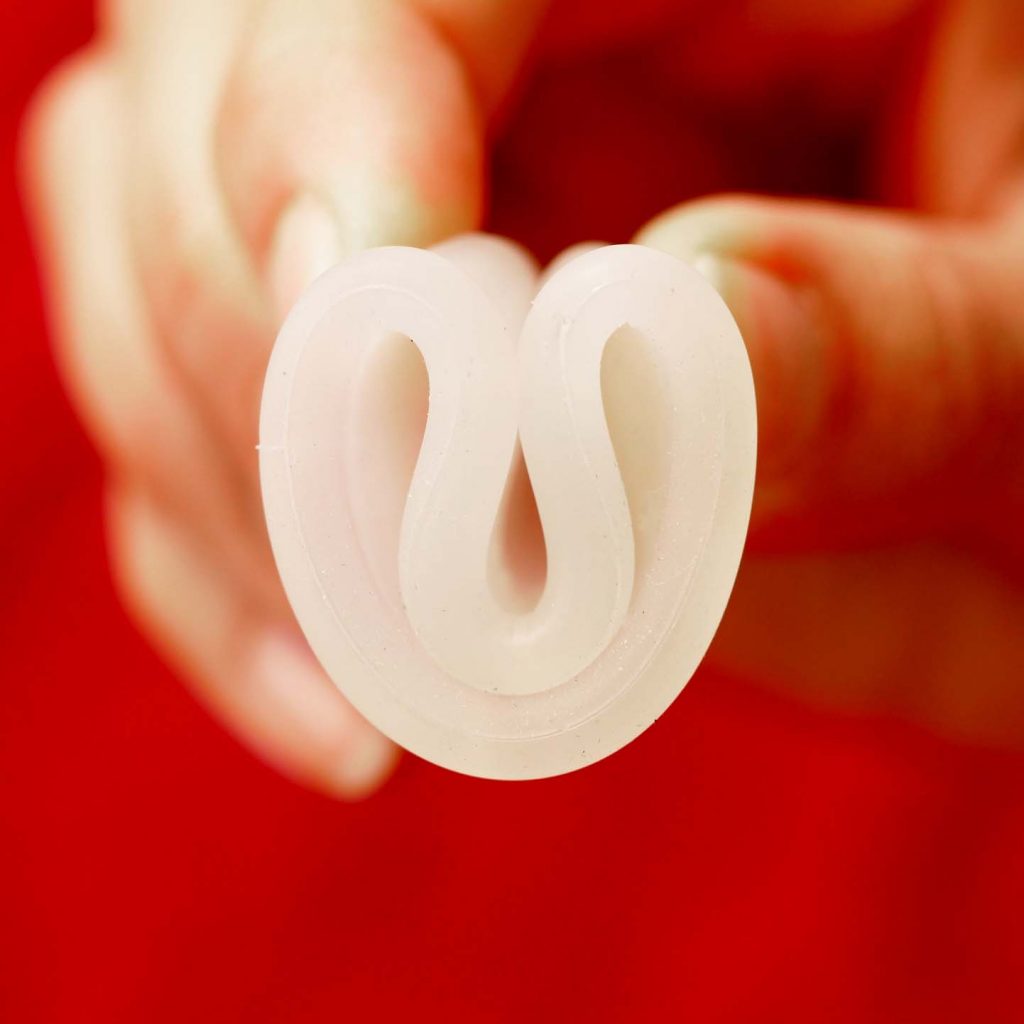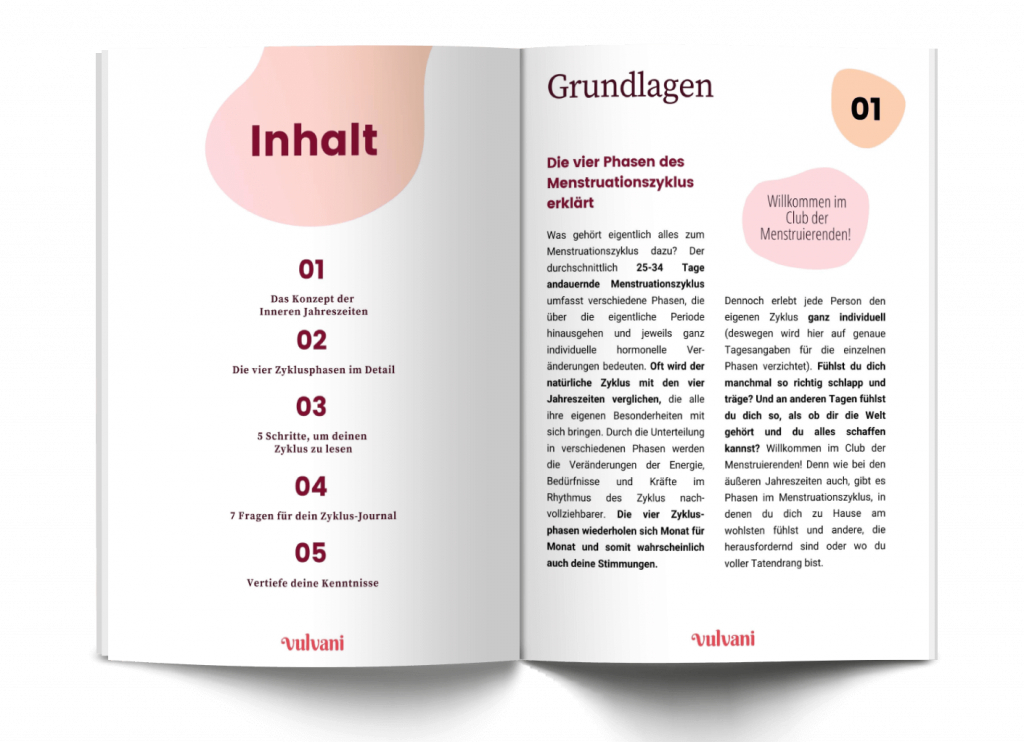
Discovering your menstruation as a spiritual practice
Yasmine understands her menstruation as a spiritual practice and shares in this interview how she is connecting more with her own body through cycle awareness.
Menstrual cups, also just called cups, are probably the most popular period product among the reusable alternatives. Did you know that menstrual cups have been on the market for ages? Actually since the 1930s, only a short time after tampons entered the market! Menstrual cups were mainly used by ‘hippie communities’. But they are slowly entering the mainstream and are becoming more and more popular – and rightly so! It’s crazy that menstrual cups have only become a trend in recent years, isn’t it? Most people are still wondering how to use the menstrual cup, so let’s explore the wonderful world of cups together!
Menstrual cups are small containers that directly collect the menstrual blood inside the body. They usually have a capacity of between 10 and 30 ml and are made of medical silicone, rubber or latex. There are now menstrual cups in various sizes and shapes. When used correctly, they can last up to ten years. However, it is possible that the colour of the cup will change slightly over time. But that is not so important, as this does not affect the function or hygiene. What experiences have you had with menstrual cups so far? Feel free to tell us about your personal experiences – we are already quite curious to hear from you.
Let’s get to the heart of it all: How to use the menstrual cup correctly? And how does it work? The requirement for the successful use of menstrual cups is in any case that you are not afraid to touch your own body and to see and feel your own menstrual blood in all its colours, shapes and consistencies! The process of using menstrual cups is actually quite simple: wash, fold, insert, ‘pop open’, collect the blood, remove the underpressure, take it out, wash, and then the cycle starts all over again. And do not forget to wash your hands. That went way too quick for you? So let’s talk about it again slowly with personal tips and detailed instructions on how to use the menstrual cup properly!



Three different folding techniques for the menstrual cups.
The menstrual cup is inserted into the vagina using a various of folding techniques. It is best to try out different folding techniques at the beginning to find out which one is easiest for you. A quick tip: If you rinse the cup under warm water, it will be easier to insert it when still slightly wet. The cup will then unfold itself inside the body to catch the blood. It is important that the menstrual cup is not inserted too far and lies against the vaginal wall. You should also make sure that it has opened completely inside you and that the cervix is above the cup so that the cup is leakproof.
You can best feel this by slowly moving your index finger around the inserted menstrual cup. When it is properly positioned and unfolded, a slight underpressure is created. You can easily check this by pulling the cup down gently. If the cup does not really move, it fits perfectly. If the cup slides down a little by pulling it slightly, it is not yet correct and the cup has probably not fully opened. In this case, you can turn it slightly in one direction until it has unfolded completely. But sometimes if nothing works, just take the cup out again, take a deep breath and try again. Also make sure that the air holes of the menstrual cup are free, because they create the desired negative pressure.
After twelve hours, at the latest, you should take out the menstrual cup again. You can empty the menstrual blood directly in the toilet. On heavier days, however, you may have to empty the cup more frequently. For many users it is difficult to feel exactly when the cup is full. For example, you can set an alarm clock and go to the toilet and empty the cup regularly every few hours. This is especially helpful in the beginning, when you are not yet too familiar with your menstrual flow. You might also feel a slight pressure in your abdomen or get mild cramps when the menstrual cup is full. For example, I often have the feeling that my bladder is full when the cup is well filled.
To remove the cup from inside of you, it is best to squeeze it lightly between your index finger and thumb at the lower end. This will release the vacuum and you can carefully pull it out again. Be careful that the menstrual blood does not drip out of the cup uncontrollably as this may cause a small bloodbath. Especially at the beginning it is a good idea to practice inserting and removing the cup in the shower or squatting down. It might also be helpful if you put one leg on the edge of the bathtub. But the most important thing is that you are relaxed! And tip number 1 is of course to stay calm and be relaxed! Important: do not forget to wash your hands properly when inserting, changing and emptying the cup.
To wash the menstrual cup, first rinse it with cold water. You can also clean the small holes on the upper edge of the cup with an interdental brush. Before and after your period, simply boil the menstrual cup in a pot for a few minutes. Make sure that the cup does not sink to the bottom of the pot, as this could cause it to melt or become deformed! It is best to place the cup in a whisk so that it floats in the water and does not touch the bottom of the pot.
Most menstruating people need a few cycles to become familiar with the menstrual cup. So don’t worry if it doesn’t go too well for you when first trying the cup and you are still wondering how to use the menstrual cup correctly. After a few cycles the hard work and practice will pay off. Every movement is in place and inserting or changing the cup is no problem anymore and will only take a few seconds. Because, as with everything in life, the beautiful saying applies here as well: Practice makes perfect! It is really worth it, because menstrual cups are a game changer for many menstruating people. Once the cup is properly postioned, you won’t even notice it! And until then: practice, relaxation and time until you become an expert on how to use the menstrual cup.
No problem. If even after a few cycles you don’t get used to the menstrual cup, then maybe it’s just not meant to be. And that is also perfectly okay. Fortunately, there are other environmentally friendly products that you could try during your next period! How about menstrual underwear or cloth pads?
Note: You are using an IUD for contraception? Then you should be especially careful when removing your menstrual cup! If the vacuum does not dissolve completely, it can cause the IUD to move slightly. And that would not be good. So always pay attention!



Yasmine understands her menstruation as a spiritual practice and shares in this interview how she is connecting more with her own body through cycle awareness.

What options are there for male birth control? Ailsa delivers an overview of what is available now, and what may come in the future.

Sustainable underwear? The founders of TUKEA talk about fair labour conditions, body diversity and body literacy.
…and empower countless women to make empowered choices about their bodies!

